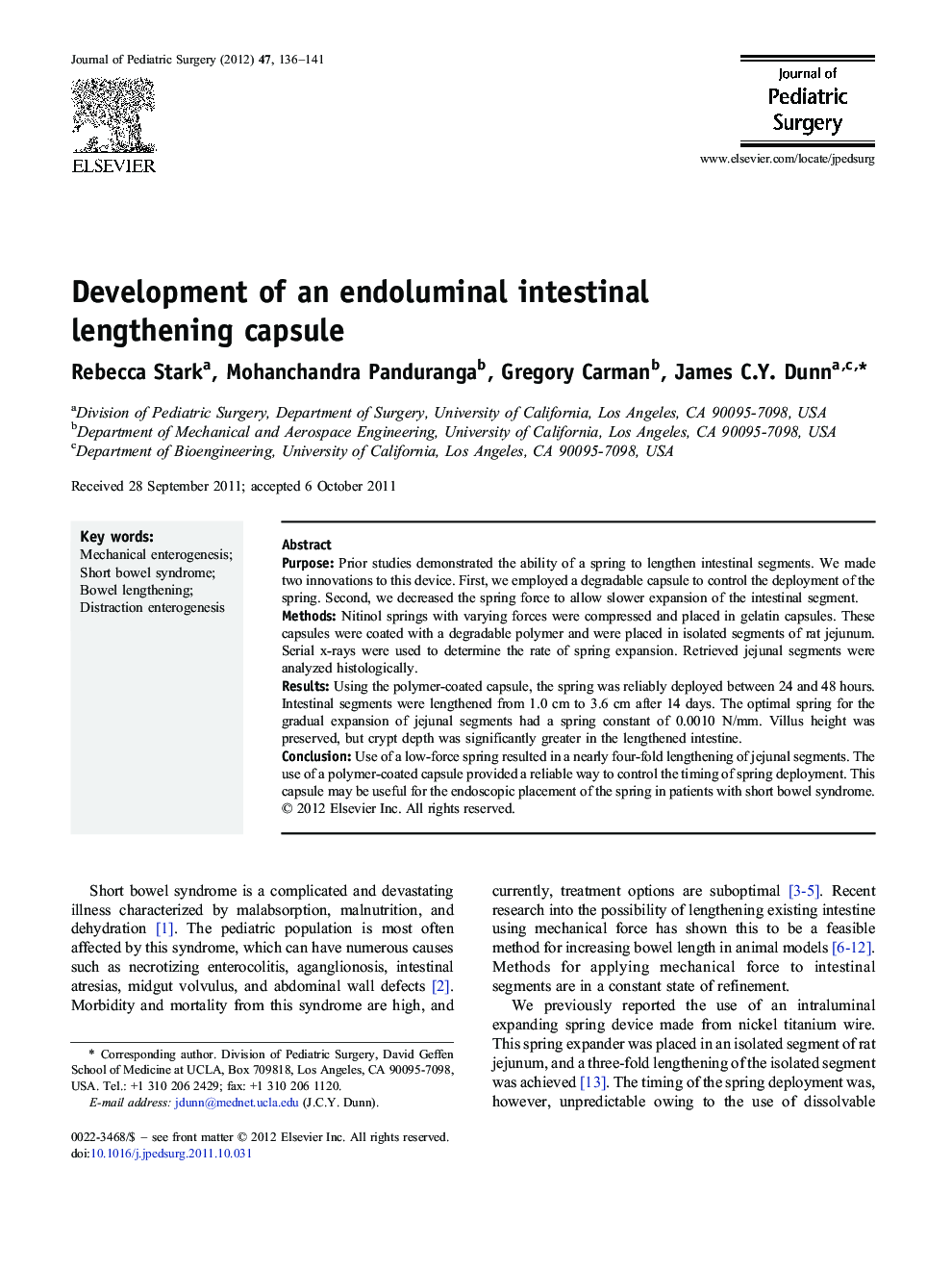| Article ID | Journal | Published Year | Pages | File Type |
|---|---|---|---|---|
| 4156757 | Journal of Pediatric Surgery | 2012 | 6 Pages |
PurposePrior studies demonstrated the ability of a spring to lengthen intestinal segments. We made two innovations to this device. First, we employed a degradable capsule to control the deployment of the spring. Second, we decreased the spring force to allow slower expansion of the intestinal segment.MethodsNitinol springs with varying forces were compressed and placed in gelatin capsules. These capsules were coated with a degradable polymer and were placed in isolated segments of rat jejunum. Serial x-rays were used to determine the rate of spring expansion. Retrieved jejunal segments were analyzed histologically.ResultsUsing the polymer-coated capsule, the spring was reliably deployed between 24 and 48 hours. Intestinal segments were lengthened from 1.0 cm to 3.6 cm after 14 days. The optimal spring for the gradual expansion of jejunal segments had a spring constant of 0.0010 N/mm. Villus height was preserved, but crypt depth was significantly greater in the lengthened intestine.ConclusionUse of a low-force spring resulted in a nearly four-fold lengthening of jejunal segments. The use of a polymer-coated capsule provided a reliable way to control the timing of spring deployment. This capsule may be useful for the endoscopic placement of the spring in patients with short bowel syndrome.
